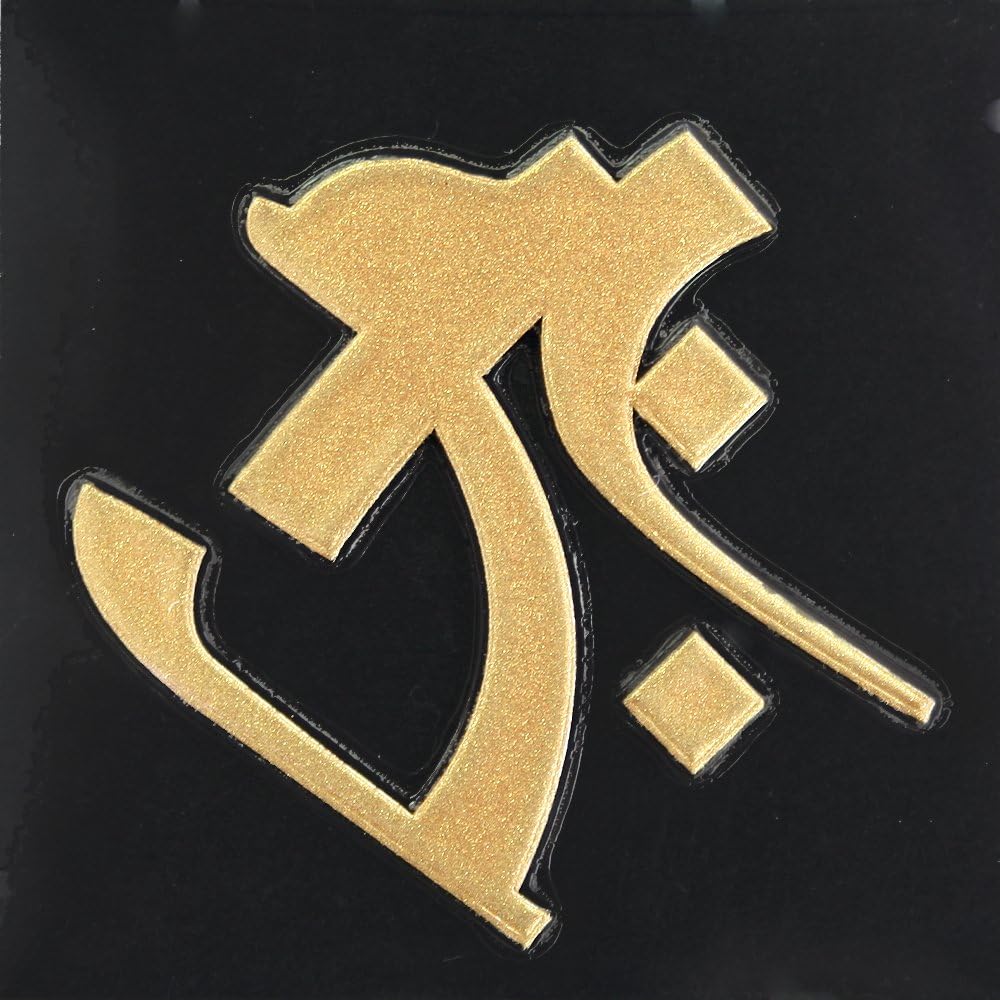You might have seen these symbols tattooed on the tails of phoenixes, in Juzu beads, or by themselves. Bonjis are quite the mysteries and powerful symbol. Let’s go on a deep dive to see what they mean!

A Bonji is a sacred Sanskrit character used in esoteric Buddhism, representing powerful spiritual concepts and deities. Each Bonji symbol carries deep meaning, they represent a year of the zodiac, such as Snake, Rabbit, Rooster, Boar ect. They are also linked to specific Buddhas, bodhisattvas, or protective forces, serving as a focal point for meditation, protection and enlightenment. Bonjis can be worn as jewellery, tattooed on the skin, or displayed in sacred spaces. Whether you seek a personal connection to your guardian deity or a meaningful symbol of spiritual growth, a Bonji is more than just a symbol-it’s a key to deeper awareness and protection on your journey.
キリーク.jpg)
The year of the Rat is linked to Senju Kannon, also known as the Thousand-Armed Kannon. Who is a revered figure in East Asian Buddhism. She is a compassionate bodhisattva, symbolizing mercy, kindness, and the protection of all beings. Depicted with many arms, Senju Kannon is believed to reach out to help those in need, offering assistance and guidance. Each arm often holds a different tool, representing her ability to respond to various challenges and suffering. Senju Kannon is especially associated with healing, and her devotion is considered a path toward achieving enlightenment through selflessness and care for others. Her presence offers solace and hope.

The Year of the Ox and Tiger share a relation to Kokuzo Bosatsu, also known as the Bodhisattva of Wisdom and Memory. Kokuzo is an important figure in Mahayana Buddhism. He is believed to possess great wisdom, especially in understanding the nature of reality and memory. Kokuzo Bosatsu is often depicted holding a sutra or scripture, symbolizing his deep knowledge and the ability to preserve and share wisdom. He represents the power of learning, remembrance, and spiritual understanding, helping individuals develop insight and clarity. Devotees turn to Kokuzo Bosatsu for guidance in gaining wisdom and overcoming obstacles, striving for enlightenment through the cultivation of knowledge and compassion.

The year of the Rabbit is connected to Monju Bosatsu, also known as the Bodhisattva of Wisdom, is a revered figure in Mahayana Buddhism. He represents the perfect understanding of reality and the deep wisdom needed to achieve enlightenment. Monju is often depicted riding a lion, symbolizing courage and strength in the pursuit of truth. He holds a sword that cuts through ignorance, showing his ability to dispel confusion and help others gain clarity. Monju Bosatsu is particularly associated with the power of insight and knowledge, guiding followers on their spiritual path to enlightenment by teaching the importance of wisdom, compassion, and right understanding.

The year of the Dragon and Snake are both connect to Fugen Bosatsu, also known as Samantabhadra in Sanskrit, is a revered Bodhisattva in Mahayana Buddhism. He represents the virtues of practice, meditation, and the path to enlightenment. Fugen is often depicted riding an elephant, symbolizing strength, wisdom, and the ability to overcome obstacles. He is known for his deep commitment to helping others achieve Buddhahood through moral conduct and meditation. Fugen Bosatsu emphasizes the importance of both wisdom and compassionate action, inspiring followers to engage in selfless acts of kindness and work towards the benefit of all beings on their spiritual journey. His teachings highlight the power of practice and virtue.

The year of the Horse is linked to Seishi Bosatsu, known as Mahasthamaprapta in Sanskrit, is a Bodhisattva in Mahayana Buddhism. Seishi represents the power of wisdom and strength, often depicted alongside Kannon (Avalokiteshvara), the Bodhisattva of Compassion. Seishi Bosatsu is associated with the ability to guide beings towards enlightenment through both wisdom and the force of perseverance. His role is to support the practice of deep contemplation and spiritual strength, helping people overcome obstacles on their path to Buddhahood. Seishi Bosatsu embodies the balance of wisdom and strength, emphasizing that spiritual growth requires both insight and determination to achieve enlightenment.

The year of the Sheep and Monkey are associated with Dainichi Myorai, also known as Vairocana in Sanskrit. Dinichi is a central figure in Esoteric Buddhism. He represents the cosmic Buddha, embodying the source of all wisdom and the ultimate truth. Dainichi is often depicted as the enlightened being who illuminates all realities, symbolizing the interconnection of the universe. He is the source of all other Buddhas and Bodhisattvas, and his teachings emphasize the unity of all things. Dainichi Myorai is a symbol of the deep, all-encompassing wisdom that can lead to enlightenment, helping followers realize the true nature of existence and transcend suffering through spiritual practice.

The year of the Rooster is related to Fudo Myo-o, also known as Acala in Sanskrit, is a fierce and powerful deity in Esoteric Buddhism. He is one of the Five Wisdom Kings and is often depicted with a sword in one hand and a rope in the other, symbolizing his ability to cut through ignorance and bind obstacles. Fudo Myo-o represents the power of unwavering determination, protecting followers from evil and guiding them toward enlightenment. His intense, fiery presence symbolizes purification and the destruction of negative influences. Fudo Myo-o teaches that through steadfast faith and discipline, one can overcome challenges and achieve spiritual clarity.
キリーク.jpg)
The Year of the Dog and Boar are both linked to Amida Nyorai, also known as Amitabha Buddha in Sanskrit. Who is a central figure in Pure Land Buddhism. He represents infinite compassion, wisdom, and the vow to help all beings attain enlightenment. Amida is believed to have created a Pure Land, a realm of peace and happiness, where beings can be reborn and eventually reach Buddhahood. His main characteristic is his boundless compassion, offering salvation to anyone who sincerely calls upon his name. Amida Nyorai teaches that by placing faith in him, one can be guided toward a peaceful existence and the ultimate goal of enlightenment.